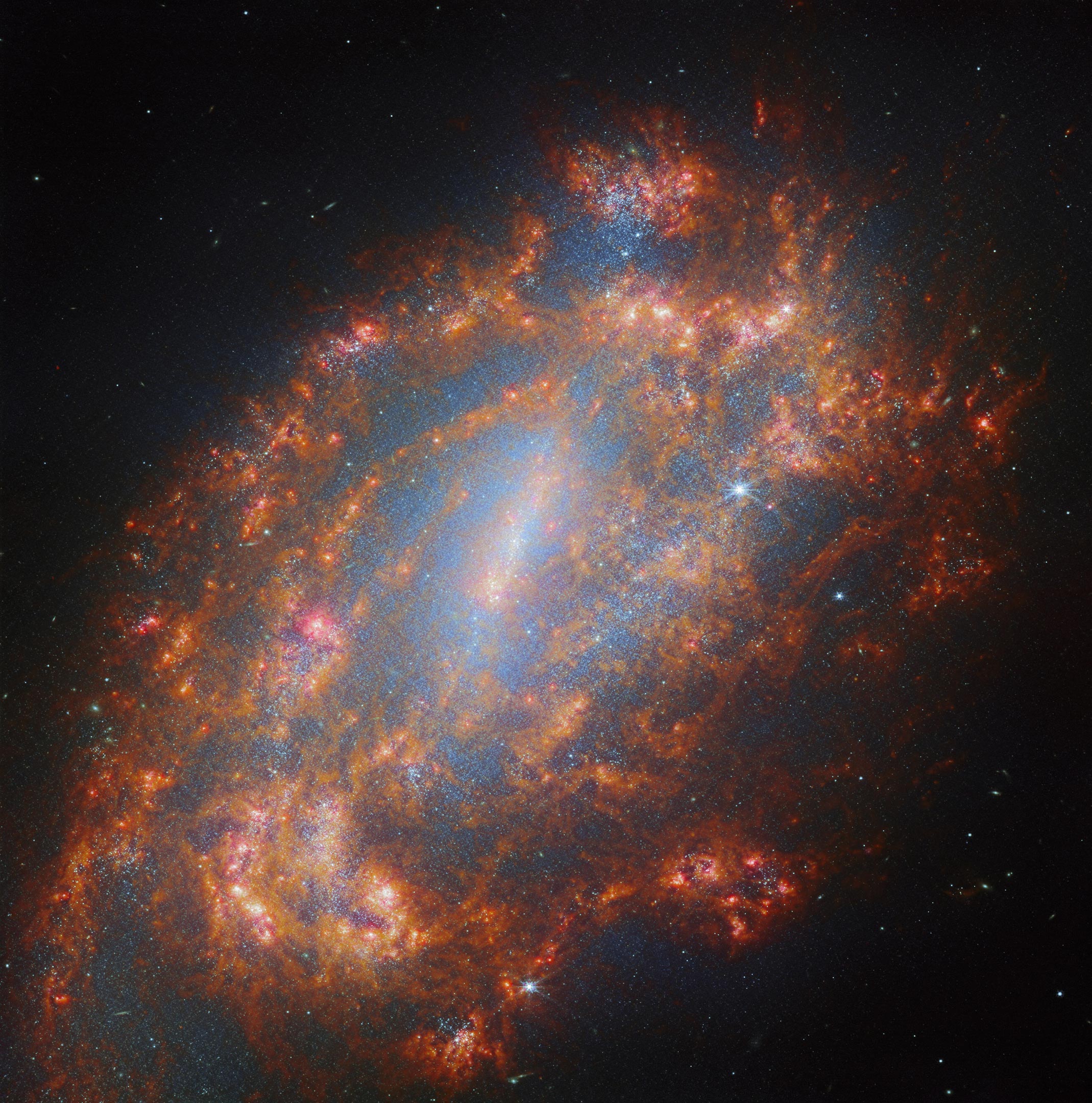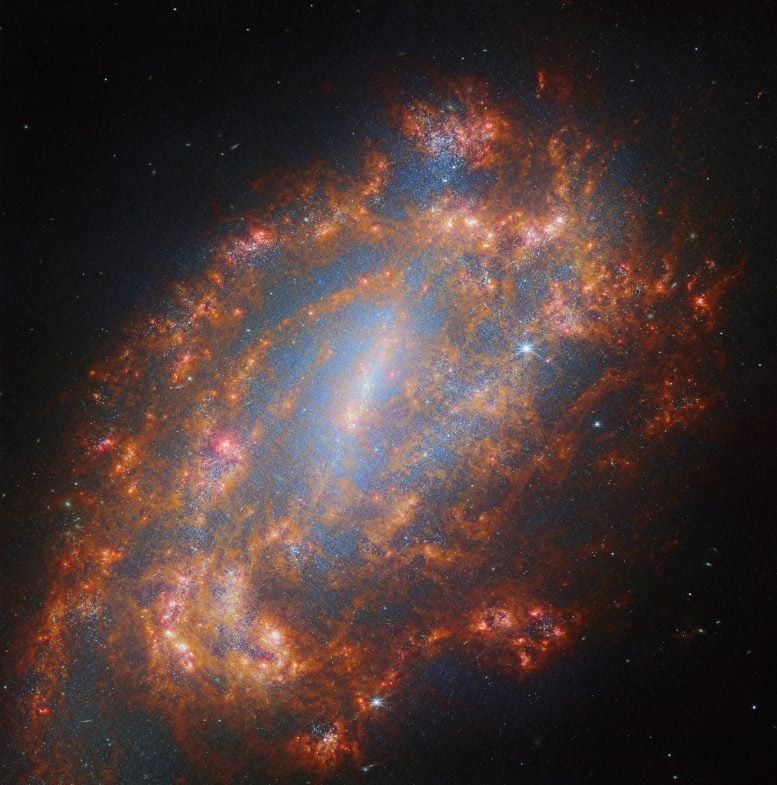

NGC 1559, a barred spiral galaxy, is brilliantly depicted through the James Webb Space Telescope’s advanced instruments, highlighting its stellar and interstellar components.
This observation is part of a larger effort to understand galactic structures and star formation processes across the universe.
This image features the barred spiral galaxy NGC 1559 as seen by the James Webb Space Telescope. The galaxy hosts a visible central region with a distinct open pattern in the loosely-wound spiral arms. NGC 1559 resides approximately 35 million light-years away in the little-observed southern constellation Reticulum (The Reticule).
Webb’s Instruments in Action
The data featured in this portrait make use of two of Webb’s instruments: the Mid-InfraRed Instrument (MIRI) and Near-InfraRed Camera (NIRCam). Here MIRI captures the glow of interstellar dust grains, which trace out the interstellar medium, the fuel for future star formation. NIRCam shows the light from stars, even young stars hidden behind prodigious amounts of dust. NIRCam also captures emissions from ionized nebulae around young stars.
Comprehensive Galaxy Survey
The data were collected by the PHANGS team as part of an observing program in which Webb will observe 55 galaxies that have also been mapped by the Atacama Large Millimeter/submillimeter Array (ALMA) radio telescope, the NASA/ESA Hubble Space Telescope and more. By combining Webb’s unprecedented view of the dust and stars with data from these other facilities, the team aims to obtain a new, highly detailed view of how stars are born, live, and die in galaxies across the Universe.
This is also a Treasury program, which means that the data will have no exclusive access period and so the scientific community (and others, including the general public) can access the data immediately. This has the advantage that more research can be done with the data more quickly.
NGC 1559’s Position and Speed
NGC 1559 has massive spiral arms that abound with star formation, and it is receding from us at a speed of about 1300 kilometers per second. Although NGC 1559 appears to sit near one of our nearest neighbors in the sky — the Large Magellanic Cloud (LMC) — this is just a trick of perspective. In reality, NGC 1559 is physically nowhere near the LMC in space; in fact it truly is a loner, lacking the company of any nearby galaxies or membership of any galaxy cluster.
NGC 1559 may be alone in space, but with Webb we are admiring from far away.